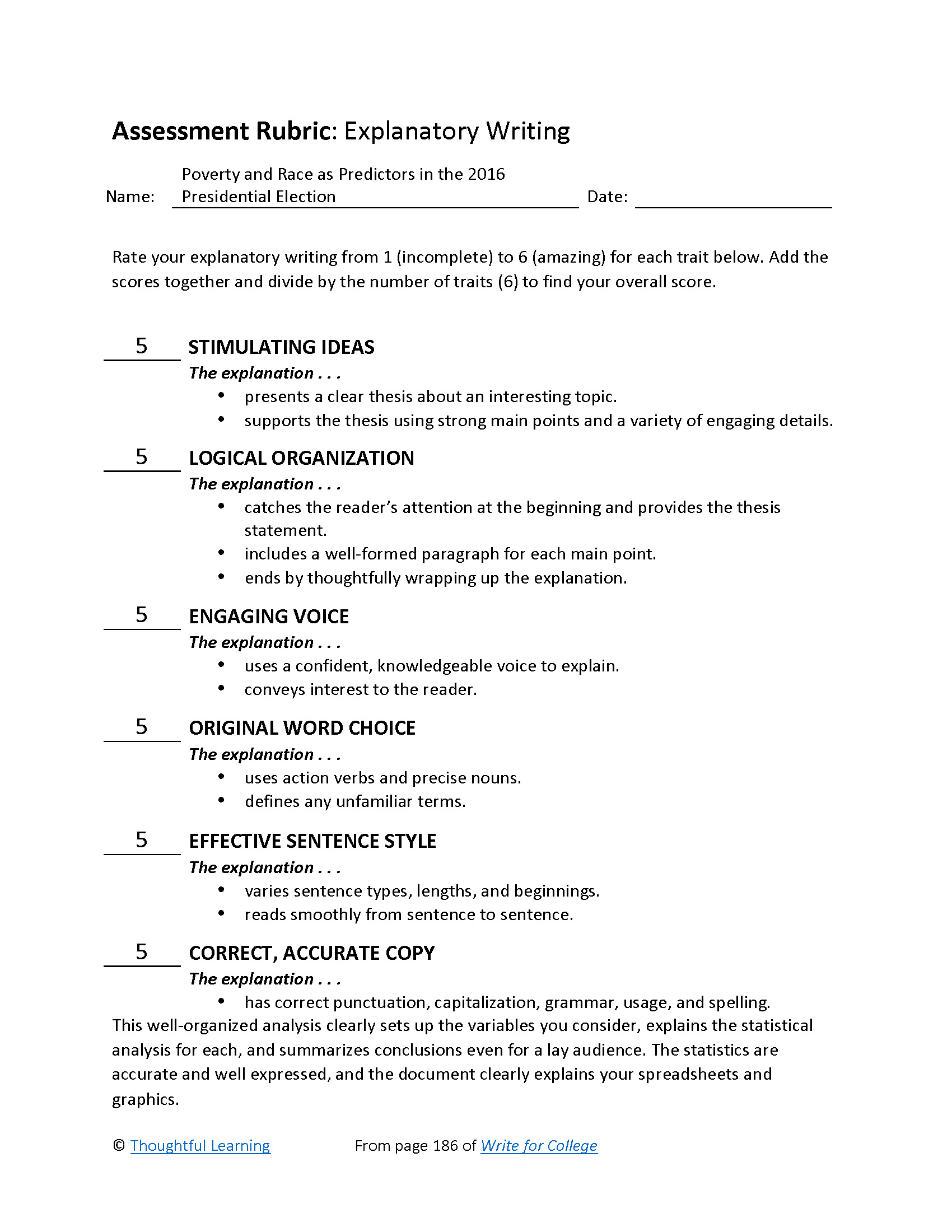Student Model
Poverty and Race as Predictors in the 2016 Presidential Election
Introduction
The 2016 presidential election was a narrow Republican victory. Many analysts indicate that two factors strongly influenced the likelihood of voting for candidate Trump in each state: the amount of poverty and the percentage of non-Hispanic white population. To check the effect of these factors, I sampled 11 states (red and blue) and compared the percentage of citizens who voted for Donald Trump against the state's poverty rate and the percentage of non-Hispanic white citizens. I expected to find a stronger correlation between poverty rate and Trump voters than between non-Hispanic white population and Trump voters, though I expected both correlations to be positive. The following sources provided the raw data:
- "Official 2016 Presidential General Election Results"
- "Income, Poverty and Health Insurance Coverage in the U.S.: 2014"
- Non-Hispanic White Populations, State by State
The attached Google Sheets present the data in spreadsheet and graph formats.*
Poverty-Rate Data Analysis
Scatterplot A shows a not very strong, linear, and positive correlation between poverty rate and voting for the Republican candidate (R = 0.508). The equation for the least squares regression line is Predicted Republican Vote = 1.38 × Poverty Rate + 26.6. The residual plot for poverty and Republican vote shows no pattern, which means that the linear solution is appropriate. The slope shows that an increase of 1 percent of a state's poverty rate would correlate to an increase of about 1.38 percent of the vote for candidate Trump. The y-intercept is at 26.6, which indicates that a state with 0 percent poverty would cast about 26.6 percent of its vote for the Republican candidate. However, it is highly unlikely that a state would have 0 percent poverty rate, so the y-intercept isn’t very meaningful to our data. The average prediction error using the least squares regression line is about 7.497 percent of Trump voters (S = 7.497). About 25.8 percent of the variation in the data for percentage of Trump voters can be attributed to the poverty rate in the state (r² = 0.258).
Outlier: Among the sampled states, California is the only outlier for this correlation. With its 16.4 percent poverty rate, California presents a much greater residual of Republican voters.
Non-Hispanic White Data Analysis
Scatterplot B shows a not very strong, linear, and positive correlation between non-Hispanic white population percentage and voting for the Republican candidate (R = 0.442). The residual plot shows no pattern, which means that the linear correlation is appropriate for this model. The least squares regression line is Predicted Republican Vote = 0.335 × Non-Hispanic White Percentage + 26.7. The slope means that an increase of 1 percent of non-Hispanic white population in a state correlates to an increase of about 0.335 percent of votes for candidate Trump. The y-intercept is not necessary to the data since no state will have a 0 percent non-Hispanic white population. The average prediction error using the least squares regression line is about 7.806 percent of Trump voters (S = 7.806). About 19.5 percent of the data variation for the state's percentage of Trump voters can be accounted for by the percentage of non-Hispanic white population (r² =. 0195). There are no outliers in this data set.
Conclusion
Of the two analyzed variables, poverty rate showed stronger correlation than race in predicting Republican votes in the 2016 presidential election. The R value for poverty rate (R = 0.508) showed a stronger positive correlation than the R value for non-Hispanic white population percentage (R = 0.442) Poverty rate has a lower average prediction error (S = 7.497) than non-Hispanic white (S = 7.806). Even despite the outlier in the scatterplot for poverty, the data is more reliable.
It is dangerous to extrapolate with this data line because doing so can produce unrealistic conditions. For example, shifting the y-intercept too low on the poverty graph would yield a state with 0 percent poverty, while shifting it too high would yield one with 40 percent. Neither of these conditions exists in the United States, so predictions of Trump voters based on these conditions would also be unrealistic. For example, a state with a poverty rate of 33 percent would yield 72.1 percent of the votes to the Republican candidate. A landslide such as this is unheard of in the United States, especially during a presidential race. While poverty rate proved the better predictor for the percentage of the population voting for the Republican candidate (R = 0.508), this variable still was not strongly correlated.
Finally, other variables could impact a state's percentage of votes for the Republican candidate, including the percentage of people on welfare, the percentage of registered Republican voters, or the average education level of voters.
*The spreadsheets and charts are not included.

Rubric


Poverty and Race as Predictors in the 2016 Presidential Election by Thoughtful Learning is licensed under a Creative Commons Attribution-NonCommercial-ShareAlike 4.0 International License.
Based on a work at k12.thoughtfullearning.com/assessmentmodels/poverty-and-race-predictors-2016-presidential-election.